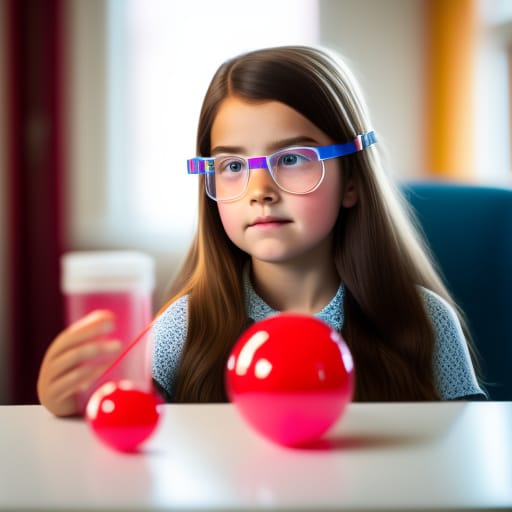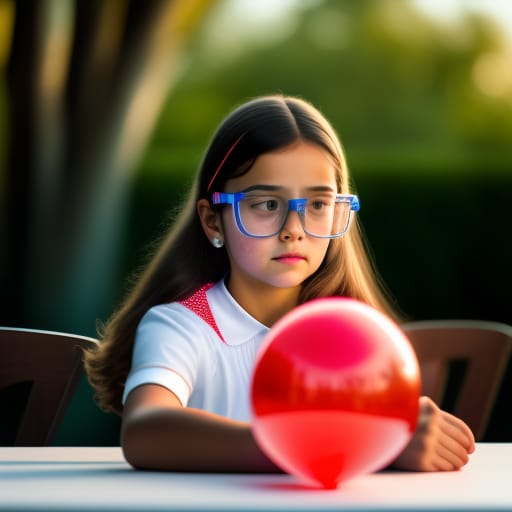Doing science experiments at home is a fun way for 10 year olds to engage in hands-on learning and explore the world around them. Science allows kids to satisfy their curiosity about how things work while developing skills like problem-solving, critical thinking, and creativity.
This beginner’s guide will provide examples of simple science experiments using common household items that 10 year olds can do at home. We’ll cover experiments related to physics, chemistry, biology, engineering, and more. Read on for plenty of DIY science experiments with step-by-step instructions that parents can do with their children!

Why Science Experiments are Great for 10 Year Olds
Around ages 10-12, kids become more interested in complex ideas and systems. Their thinking skills, attention spans, and problem-solving abilities expand rapidly.
Doing science experiments for kids capitalizes on this natural curiosity and growth. Science is about asking questions and making discoveries. Experiments let kids exercise their new intellectual abilities as they learn:
- Observing – Through careful observation they notice details and changes.
- Asking questions – Experiments encourage them to constantly ask “What would happen if…?”
- Problem-solving – They must figure out solutions to the problems posed by the experiments.
- Drawing conclusions – They derive meaning from the data and observations made.
- Persistence – Experiments teach perseverance and dealing with trial and error.
Beyond specific science skills, experiments also build life skills like independence, confidence, and teamwork. Kids get a sense of accomplishment from successfully completing an experiment on their own.
Science teaches kids how to follow instructions, pay attention, document findings, and work safely. Collaborating on experiments with siblings or friends also builds communication and relationship skills.
The benefits are endless! Read on for some incredibly fun science experiments 10 year olds will love.
Science Experiment Safety Tips
Doing science experiments with your 10 year old is educational magic – as long as safety comes first! Follow these tips:
- Supervise – Children need adult guidance and supervision for every step of an experiment.
- Protect eyes and skin – Wear safety goggles, gloves, lab coats, or aprons when needed. Tie back long hair.
- Read instructions thoroughly – Make sure you understand each step before proceeding.
- Set up a safe space – Designate a clear, clean workspace with good ventilation. Avoid clutter.
- Use care with heat sources – Only allow responsible usage of burners, matches, etc. under your watch.
- Clean up properly – Follow disposal instructions. Wash equipment and surfaces after use.
With the proper precautions, you’ll enjoy an afternoon of productive educational fun with your 10 year old! Now let’s get to the good stuff…
Physics Experiments
Physics deals with matter, motion, electricity, light, and more. Physics experiments enable kids to explore core scientific concepts like energy, gravity, friction, magnetism, and force:
Gravity Ball Drop
Supplies Needed: Golf balls, meter stick or yardstick, smartphone stopwatch app
This experiment examines how gravity affects the speed of a falling object.
- Hold a ball at a set height, perhaps 1 meter above the ground.
- Use the stopwatch to time how long it takes to drop to the ground.
- Repeat several times and calculate the average time.
- Now drop the ball from higher points like 2 meters or 3 meters.
- Calculate the new average times.
What’s happening? Gravity accelerates the balls so they fall faster from higher up. Plot the data to visualize the relationship between drop height and time.
Balloon Rocket Car
Supplies Needed: Balloon, string, straw, tape, wheels (or materials to make wheels like CDs)
Harness the power of escaping air to propel a balloon rocket car across the room!
- Inflate a balloon and pinch the neck to temporarily trap the air inside.
- Tape a straw along the body of a balloon. This is the “rocket nozzle”.
- Attach wheels and assemble a chassis from cardboard, craft sticks, etc.
- Feed string through the straw and attach to a fixed point.
- Let the balloon neck go and observe the rocket car zoom away!
What’s happening? The escaping air provides a propulsive force that drives the car forward. Adjust the balloon size, nozzle size, and chassis design to optimize performance.
Chemistry Experiments
Chemistry deals with matter, chemical reactions, acids and bases, and forces between atoms:
Baking Soda and Vinegar Reactions
Supplies Needed: Baking soda, vinegar, transparent cups, food coloring (optional)
Observe a classic chemical reaction first-hand:
- Pour vinegar into a cup until it’s about 1 inch deep.
- Add a few drops of food coloring (optional).
- Pour baking soda into the vinegar and watch fizzing bubbles erupt!
What’s happening? An acid-base reaction occurs between the acetic acid in the vinegar and the sodium bicarbonate in the baking soda. Carbon dioxide gas is produced.
Magic Milk
Supplies Needed: Shallow plate, milk, liquid dish soap, cotton swabs, food coloring
Investigate the molecular forces that allow soap to interact with fats:
- Pour enough milk in a plate to make a thin layer on the bottom.
- Add several drops of different food colorings around the milk.
- Dip a cotton swab in dish soap and gently touch the center of the milk.
- Watch a colorful pattern form!
What’s happening? Milk contains fat molecules that normally repel each other. But soap molecules can disrupt and react with fat, causing the colorful dyes to spread.

Biology Experiments
Biology involves living organisms, plants, our bodies, ecosystems, microscopic life, and more:
Make an Indoor Ecosystem
Supplies Needed: Jar, pond water, pond plants and animals
Create a mini ecosystem in a jar to observe adaptations and interactions:
- Collect shallow pond water, plants like duckweed or elodea, and tiny animals like snails, fish, or shrimp.
- Gently place them in a clean jar and seal the lid. Ensure organisms have air and light.
- Observe the tiny ecosystem over days. Add fish food if needed.
What to look for: Animals finding food and shelter, gas bubbles released by plants, microorganisms in the water, small insect larvae, etc. It’s an up-close look at ecological connections!
Build a Lung Model
Supplies Needed: Plastic bottle, balloon, straws, rubber band
Learn how lungs work by constructing a model:
- Carefully cut off the bottom third of a plastic bottle.
- Stretch a balloon over the cut top to create an “airtight lung”.
- Attach straws into the side of the bottle to represent bronchi/airways.
- Draw on the balloon with Sharpie to represent the lungs and diaphragm.
- Seal the balloon to the bottle seam with a rubber band.
- Pull on the balloon to observe it inflating and deflating like a lung!
What’s happening? This models how the diaphragm and rib muscles change lung volume during breathing. Air flows through the bronchi into the balloon “lungs”.
Engineering Experiments
Engineering uses science to invent, design, and build things. Try these experiments to think like an engineer:
Make a Catapult
Supplies Needed: Popsicle sticks, rubber bands, plastic spoon, plastic cup
Engineer a mini catapult to launch objects across the room:
- Stack popsicle sticks to build a base and lever arm.
- Attach the lever arm with rubber bands to allow hinged movement.
- Affix a plastic spoon at the end of the lever to act as the catapult cup.
- Load an object like a cotton ball or crumpled paper.
- Pull down the lever arm to store energy and release it to launch!
Catapult physics: Adjust the arm length, rubber band tension, and launch angle to hit targets across the room.
Design a Bridge
Supplies Needed: Craft sticks, tape, textbooks or weights
Take on the challenge engineers face when building real bridges:
- Use craft sticks and tape to design a model bridge between two stacks of books around 6 inches apart.
- Test its strength and stability by placing books or other weights in the center until it collapses.
- Redesign to improve your bridge by changing the truss design or number of supports.
Engineering mindset: Analyze failure points, rethink and iterate design, build prototypes, and test again!
Electricity and Magnetism Experiments
Harness the invisible powers of electricity and magnetism:
Make a Battery from Fruits and Coins
Supplies Needed: Lemon, copper penny, galvanized screw/nail, LED light bulb
Harness citric acid to generate electricity:
- Insert a galvanized nail and copper penny into a lemon as the 2 electrodes.
- Connect each electrode to an LED light bulb with a wire.
- Observe it light up from the lemon battery’s flow of electrons!
How batteries work: Chemical reactions within the lemon cause an electric charge difference that makes electrons flow through the wires and light bulb.
Build a Magnetic Maze
Supplies Needed: Sheet of cardboard, magnets, paperclips
Construct a maze to guide a paperclip through using only magnets:
- Arrange strong magnets below a cardboard sheet in guidance pathways.
- Drop a paperclip onto the cardboard and tilt it to move the clip through the “maze”.
- Rearrange magnets and try again – can you find the path?
Magnet principles: Magnets can attract and repel without touching and through materials like cardboard. Engineers use magnets to build amazing technologies!
Examples of Advanced Science Experiments
The previous experiments introduced basic scientific concepts using household items. For 10 year olds interested in more advanced science, consider:
- Projects using the scientific method involving hypotheses, variables, data tables, etc. This builds critical thinking skills.
- Robotics projects using kits like Lego Mindstorms teach programming, design, and electronics.
- Chemistry kits to make slime, reactions, crystals, and simulated volcanic eruptions.
- Nature observation projects involving birding, insect collecting, tracking animal prints, leaf classification, etc.
- Astronomy experiments track constellations, and the moon’s phases, or investigate gravity and inertia.
- Microscope slides and kits to examine microscopic worlds and bacteria.
The opportunities for hands-on science learning are endless! Adjust projects according to your 10 year old’s abilities and interests.
Tips for Supporting Your Child During Science Experiments
- Let them take the lead and resist the urge to complete tasks for them. Kids learn from working through frustrations.
- Ask open-ended questions and listen without judgment as they describe their observations and discoveries.
- Help them follow safety precautions without excessive fear of mistakes. Science requires trial and error.
- Have them write or draw their hypothesis, the experiment process, and the results. Organizing the project reinforces learning.
- Let them use technology like digital microscopes, cameras, or data-collecting apps to enhance experiments.
- Do projects outdoors whenever possible, like in the yard, a park, or nature trails.
- Ensure they clean up afterward and dispose of materials properly to instill responsibility.
- Above all, let your child have fun! Engaging their curiosity and maintaining excitement about science is key.

Ideas for Science Experiments Using Household Items
Most of the experiment supplies can be found around the house:
- Kitchen ingredients – Try baking soda, yeast, milk, oil, salt, sugar, eggs, food coloring, etc.
- Food and plastic containers – Yogurt cups, water bottles, jars, aluminum foil, and plastic wrap all have experimental uses.
- Paper and craft supplies – Paper, cardboard, toothpicks, string, rubber bands, balloons, clay.
- Household cleaners – For supervised chemistry, use small amounts of dish soap, laundry supplies, vinegar, etc.
- Electronics – Old CDs, batteries, switches, bulbs, wires, and magnets from speakers all have scientific uses.
Almost anything can become part of a fun science experiment with an inventive 10 year old mind!
Developing a Love of Science
Doing simple DIY experiments with your 10 year old child gives them their first taste of independent science discovery. Encourage their curiosity, questioning, and problem-solving skills by trying new projects together.
Support your child without taking over. Let them make hypotheses, test variables, record data, and analyze results. Make science a fun, engaging adventure of learning by doing!
The analytical and critical thinking skills gained will serve them tremendously later in education and life. Fostering an early love of science exploration equips the innovators and leaders of tomorrow. So try out some of these safe, fun science experiments at home and watch your 10 year old’s passion for STEM take flight!
Frequently Asked Questions
What are some fun and easy science experiments for 10 year olds?
There are tons of engaging science experiments 10 year olds will love using common household items. Try physics experiments like a balloon rocket car or gravity ball drop. Do chemistry experiments with baking soda and vinegar or milk and dish soap. Try engineering projects like building a catapult or bridge.
What supplies do I need for science experiments for 10 year olds?
Most of the materials needed are already in your kitchen or around the house. Simple science experiments can be done with things like water, baking soda, vinegar, milk, oil, eggs, balloons, clay, cardboard, craft supplies, magnets, batteries, switches, and more.
How can science experiments be educational for 10 year olds?
DIY science experiments teach 10 year olds core science concepts related to physics, chemistry, biology, engineering, and technology. Kids build science skills like observing, questioning, problem-solving, collecting data, and analyzing results. Experiments also build life skills like independence, creativity, persistence, and responsibility.
How can I support my 10 year old during science experiments?
Let them take the lead, make mistakes, and find solutions. Ask open-ended questions and listen without judgment. Ensure they follow safety rules. Have them document hypotheses, methods, observations, and conclusions. Supply them with books, kits, and technology to extend learning. Above all, science experiments for kids should be fun!
What science experiment books are best for 10 year olds?
Recommended books like The Everything Kids’ Science Experiments Book, Great Science Experiments, and One Minute Mysteries have hundreds of ideas for fun science experiments across scientific fields. They include explanations and graphics to deepen a 10 year old’s science knowledge. Pair books with hands-on projects.